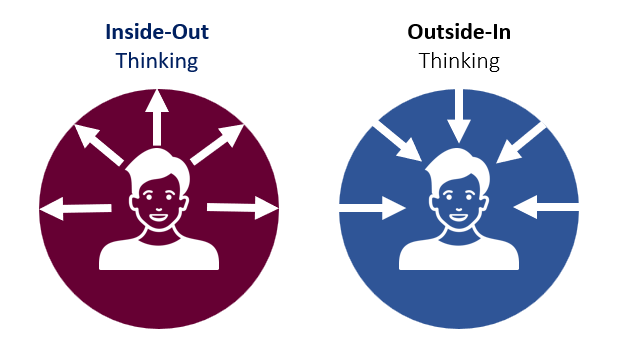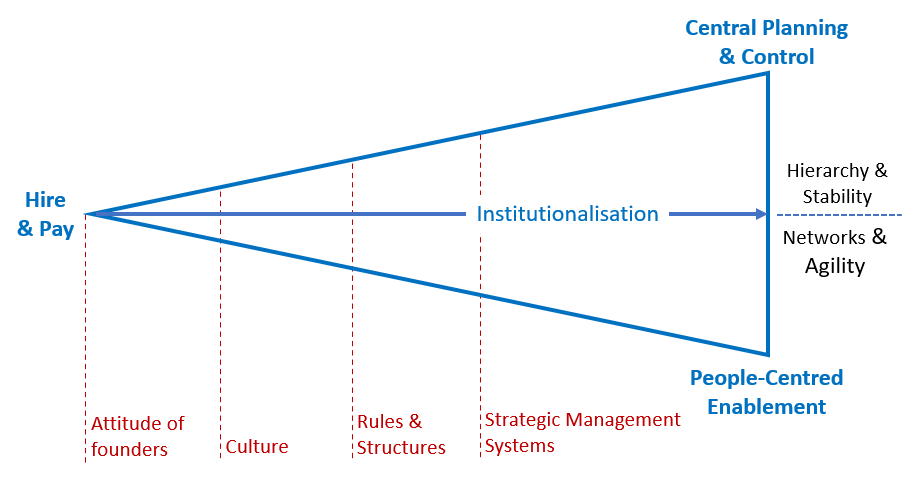Published by: Tamer Elogueil
Disclaimer: The following content applies to general business strategy, but my examples and applications, will be towards HR. However, you may still find this relevant if you apply it to other business unit.
Building an effective HR strategy is crucial for any organisation aiming to align its human resources with its overall business objectives. However, the journey towards creating a successful HR strategy is often fraught with potential pitfalls that can derail even the most well-intentioned plans. These pitfalls may arise from misalignment with business objectives due to a ELT lack of focus, adapting arbitrary strategies or insufficient analysis of the structural and cultural context within the organisation, among other factors we will discuss here.
These common missteps can lead to a strategy that falls short of delivering the desired results, potentially impacting business development or performance, lowering engagement, and leading to talent loss. Additionally, they may result in inaccurate decisions regarding talent retention, workforce planning, identifying skills gaps, and defining talent pipelines.
In this article, we will explore the most significant pitfalls in building an HR strategy and provide insights on how to avoid them, ensuring that your HR initiatives are both impactful and sustainable.
What Are the Significant Pitfalls When Building HR Strategies?
Lack of Focus
As an HR consultant, when I have conversations with a CHRO, CPO, HR Director — whatever the title may be in your organisation — I often ask what is most important thing to you. Quite often, the response is covering everything: DE&I, employee satisfaction, engagement, L&D, retention, talent pipeline, performance management, etc.
This indicates a lack of focus and direction. "If EVERYTHING is a FOCUS, NOTHING is a FOCUS."
The real questions that need to be asked back to the HR leaders and they need to reflect on are:
· What is truly critical for the success of the business?
· What are the key actions that will make a difference in the business?
· What are the challenges? or What require our immediate attention?
· What is nice to have? What have a direct impact or will make a tangible difference?
· How would you prioritise the above into short, medium, and long-term focuses?
Arbitrary Strategies
An arbitrary strategy is one that is based on random or illogical choices, or personal whims, rather than on reason or a structured system. When discussing strategy with a CPO/CHRO, or similar, you might often hear responses like “hiring the right people,” “development and retention,” or perhaps a vague HR strategic statement such as “We want people to leverage their talent.” However, this is not a strategy.
Often, strategies are articulated in such a generic manner that they could apply to almost any organisation—e.g., “deliver excellence” or “make a difference every day.” At other times, strategies are so specific to a particular industry that they constrain creativity and limit business opportunities.
How can you tell if a strategy is nonsensical? Simply by playing the opposite game. Does the opposite of this strategy make sense? If the answer is NO, then you’ve got a meaningless strategy on your hands.
Consider this: what is the opposite of “delivering excellence”? “Delivering inadequacy”—as opposed to what, doing worse? In an HR context, consider “hiring the right people.” The opposite would be “hiring the wrong people.” These examples highlight the lack of genuine strategic choice in such statements.
For a simple illustration, imagine your strategy was for your company to be the low-cost option in your market. The opposite would be to position the business as the high-cost (premium) option. Each of these represents a true strategic choice. Applying this to an HR context, if your strategy were to hire cost-effective talent, the opposite would be to hire premium, high-cost talent—again, a legitimate strategic choice.
“A Strategic Statement Can Only Be Strong If the Opposite Also Makes Sense as a Viable Alternative.”
An example of an effective HR strategy where the opposite makes sense and could be an alternative choice is:
Original: "As a company, we have the responsibility to develop our most talented people. We will enable them at all times." Opposite: "The responsibility for the development of our employees lies with the employees themselves. We will enable them where necessary and desired." As you can see here, both options are viable alternatives hence this is a strong sensible strategy.
Copying from Others
Some HR leaders may copy an HR strategy they previously implemented in another industry or learned about at a forum or event. To be clear, I am not referring to benchmarking against similar industries and applying comparable concepts where appropriate.
Copying HR strategies will not work in your organisation because every organisation is different, unless the conditions are identical—a scenario that is rare and almost impossible. It is unlikely that both organisations will have the same business advantages, market share, growth plans, financial status, and, most importantly, the same organisational structure, talent maturity levels, and cultural context.
Complicatedness
The main players and executors of HR systems and processes, resulting from implemented HR projects and initiatives—whether related to workplace policy, performance appraisal, rewards, hiring, or development—are the business unit managers and the employees themselves. It’s important to understand that when the average manager or employee wakes up and comes to work for daily operations, they are unlikely to be thinking about how their actions impact the annual appraisal, job profiles, competency frameworks, or even talent pipelines and engagement drivers.
The reality is that neither managers nor employees are HR professionals or psychologists who spend their day considering HR and psychological theories. They aren't consciously applying Maslow's hierarchy of needs or Herzberg's two-factor theory while simultaneously keeping engagement drivers in mind.
A real-life example of this can be seen in organisations using complex, multi-level competency models and job architectures, HR planning linked to complicated behavioural anchors, job descriptions, evaluation tools, remuneration matrices, and retention strategies.
Policies and systems need to be simple and considerate of the end-users, or they risk ending up forgotten in a top drawer. Some companies implement overly complicated mechanisms and concepts that are difficult to follow in real life, resulting in the entire system and processes becoming ineffective and failing to meet their objectives.
For a system to succeed, it must be understood by those who actually implement it on the ground.
Inside-Out vs Outside-In Thinking
Inside-Out Thinking: In this approach, specific HR strategies, initiatives, and projects (solutions) originate from the HR Executive (CHRO, CPO) and their HR leadership team. The HR professionals are then directed to design and contextualise these strategies, after which the CHRO/CPO presents them to the Executive Leadership Team (ELT) and CEO for approval.
Once approved, the HR team is tasked with rolling out the initiatives across the business, bearing the burden of convincing the business units and employees of the importance and benefits of these initiatives.
Real-Life Example of Inside-Out Thinking: An HR executive comes to the team and says, “Let’s work on employee branding or corporate culture. I need the team to design the initiative/project as I will be presenting this next week to the ELT”. There is initiated by the HR leader, with minimum involvement of the team or business units in defining the problem or its context.
Another indicator that the CHRO and HR leadership team may be applying Inside-Out thinking can be observed in regular department meetings. When questions related to HR initiatives are addressed to the team, they are often met with silence. This silence suggests that the HR professionals are either not fully onboard with what is being implemented, do not understand the context or the underlying problem (as it was never adequately communicated), or are thinking, "Now you're asking for input, but whatever I say, you'll do what you want anyway."
Outside-In Thinking: This approach involves first exploring the challenges and issues with HR teams, explore context, asking the team to develop concepts to address these issues. These concepts are then discussed with business function managers and selected key employees to determine whether they are relevant, achievable, and supportive in real-life situations. During these discussions, useful questions to ask employees and managers might include:
· What do you understand from this initiative? Is it clear? Can you explain why we are doing this?
· What do you think of it? What stands out to you?
· If you were wearing the HR hat, what would you do differently? Why do you think so?
Once the context is defined and the initiative design is complete, the HR manager presents it to the CPO/CHRO, who may then take it to the CEO and ELT for final approval if needed. I will discuss this further in my upcoming article on “Leadership in the Structural and Cultural Context Within Organisations.”

Solutions-Focused vs Problem-Focused
You often hear in business meetings, "Let’s be solutions-focused". While this idea is theoretically sound, it has led to a series of misinterpretations, resulting in poorly constructed and designed business solutions.
Originally, this statement was intended to guide people management in the context of problem-solving. It means that when someone presents a problem, instead of investigating its cause and the people involved, we should first find a solution, then discuss the underlying reasons, the people involved, and how to prevent the issue from recurring. However, it was never meant to suggest that we should completely ignore the problem.
Let look on this with an HR example: An HR manager proposes launching an employee engagement survey. The HR Executive and ELT approve and implement it. After two or three survey cycles, someone asks the simple question: "What is the problem? Why are we still running these surveys?". Now it's the time to look and define the problem.
This scenario is a clear indication that we were solutions-focused rather than problem-focused. We proposed a solution, gained approval, designed it, implemented it, and only then did we begin to look for the problem.
The more effective approach when designing an HR solution as part of a strategy is to first conduct a root cause analysis, identify the problem, explore its context, determine the appropriate solution, and then proceed with design and implementation.
False application: Solution → Design → Implement → Context → Problem → Assess
Correct application: Problem → Context → Solution → Design → Implement → Assess

Types of HR in the Structural & Cultural Context
It is crucial to identify the type of HR within the cultural and structural context of your organisation in order to build an effective strategy. In this section, I would like to refer to the Human Resources Management model developed by Dr Armin Trost of Hochschule Furtwangen University (HFU), Germany.

What type of HRM does your organisation have?
Hire & Pay: In this scenario, there is little to no institutionalisation. HR barely exists—it simply hires and compensates employees. Beyond this, HR does nothing else. There is no performance appraisal, employer branding, structured learning and development, or HRIS. Sometimes, the term "HR professional" is not even in use.
As institutionalisation grows and increases, HR begins to assume more responsibilities, establishing rules, processes, systems, and KPIs. At this stage, there are two potential high institutionalisation paths:
Central Planning & Control: This involves a high level of institutionalisation, where a central authority with a hierarchical structure is necessary to maintain stability. HR is responsible for all HR-related activities, including hiring, learning, development, and talent retention.
How does this feel from the people’s and business unit perspective?
People perspective: Imagine you are highly talented. You have to sit and wait for HR to identify you as a high potential, communicate this to you, and, if you agree, HR will send you your career path, outlining the steps and development activities required for your journey.
Business unit perspective: image recruiting, the business unit requests new employees from HR, which then, HR handles the job descriptions, vacancy postings, and applicant management all the way up till onboarding. The business unit in this scenario, will check in weekly on progress. Essentially, HR is responsible for everything HR-related.
While this should not be the common practice in today’s businesses, it remains a reality in some companies. Central planning and control suit organisations with a very hierarchical mindset, those that desire stable, predictable, and enduring systems and processes.
People-Centred Enablement: Here, there is also a high level of institutionalisation, but with decentralised authority, greater agility, and a focus on networking. The assumption is that people share and take responsibility for all people-related matters.
· Who is responsible for people development? It’s the people themselves.
· Who is responsible for the most talented individuals? It’s the most talented individuals.
· Who is responsible for hiring eight new engineers? It’s the business line.
· Who is responsible for retention? The team.
HR’s role here is to offer support and open doors, but it is up to the business and its people to walk through them and find their path. If guidance is needed, HR can offer coaching. Similarly, in hiring, the business line is responsible, as they are the ones who understand the necessary skills, knowledge, and expertise. HR will provide support in the necessary activities and steps when required.
In the people-centred enablement, HR will still manage operational and administrative day-to-day tasks.
Based on the above, the type of HR your organisation has will dictate how you build your HR strategy. I would be keen to hear your thoughts on this article and find out over your career have you came across any of those 3 HR types.
If you find it useful, please share it with others to ensure HR strategies are effectively built for the benefit of both the company and its people.



Comments
No Comments added, be the first...